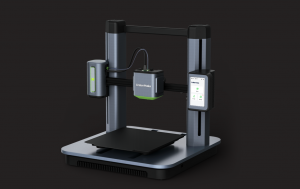In today’s dynamic life sciences landscape, the relationship between pharmaceutical companies, regulators, and patients has evolved dramatically. No longer are patients passive recipients of healthcare; they are informed, empowered, and vocal participants in their treatment journeys. As a result, pharmacovigilance (PV)—the science of detecting, assessing, and preventing adverse effects—has had to evolve too.
A new paradigm has emerged: patient-centric pharmacovigilance, an approach that places patient experience and trust at the center of safety monitoring. This shift is not merely a compliance requirement—it represents a transformation in how the industry understands and values patient data, engagement, and transparency.
The Changing Face of Pharmacovigilance
Traditionally, pharmacovigilance systems focused on regulatory reporting and data collection—tasks designed primarily to satisfy compliance and audit standards. The goal was clear: identify adverse events (AEs), assess causality, and ensure patient safety. However, these activities were often reactive, data-driven, and distant from the human stories behind each report.
Today’s reality demands more. Patients share their experiences across digital platforms, social media, and patient advocacy networks. Their voices are immediate, authentic, and—at times—eloquent in expressing both gratitude and frustration with their treatment journeys. The spontaneous nature of this information offers a valuable, if complex, resource for safety surveillance.
To meet modern expectations, pharmacovigilance must evolve beyond mere data collection toward meaningful engagement. A patient-centric model ensures that safety monitoring becomes not only about identifying harm but also about understanding lived experiences and fostering long-term trust.
From Data Points to Patient Narratives
At the heart of patient-centric PV lies a simple truth: every adverse event represents a story. Behind each signal or safety report is a person navigating uncertainty, side effects, and hope. Transforming pharmacovigilance from a technical function into a patient-informed discipline requires listening to these stories and contextualizing them.
This approach involves:
-
Integrating patient feedback into signal detection processes.
-
Encouraging open dialogue through user-friendly reporting systems and mobile tools.
-
Leveraging real-world evidence (RWE) to capture outcomes from diverse populations, not just those represented in clinical trials.
-
Collaborating with patient advocacy groups to co-design safety communication strategies.
By embedding the patient perspective into pharmacovigilance workflows, companies can uncover richer insights—such as the emotional and quality-of-life impacts of therapies—that traditional metrics may overlook.
Building Trust Through Transparency
Trust is a fragile currency in healthcare. Historical missteps, data privacy concerns, and opaque communication have sometimes undermined public confidence in the pharmaceutical sector. Patient-centric pharmacovigilance aims to rebuild that trust by being transparent about how data is collected, analyzed, and used.
Companies that communicate clearly about drug safety—acknowledging both benefits and risks—tend to foster stronger relationships with patients and healthcare providers. Transparency also extends to proactive risk communication: publishing lay summaries of safety findings, updating product labeling in accessible language, and providing feedback to those who report adverse events.
This culture of openness helps demystify pharmacovigilance, transforming it from a regulatory obligation into a shared commitment between industry and patient communities. When patients see that their experiences contribute to improved safety, their trust in the system grows.
Technology as an Enabler of Patient-Centricity
The technological revolution has been a catalyst for this shift. Artificial intelligence (AI), natural language processing (NLP), and cloud-based solutions have enhanced pharmacovigilance efficiency, accuracy, and reach. Modern PV systems can now analyze vast amounts of structured and unstructured data—from clinical databases to social media posts—to identify potential safety signals earlier than ever before.
For example:
-
AI-powered text mining can detect subtle patterns in spontaneous reports or patient forums.
-
Mobile health (mHealth) apps allow patients to report side effects directly and receive timely responses.
-
Blockchain technology promises secure, transparent data sharing across stakeholders while protecting privacy.
However, technology alone is not enough. The true innovation lies in aligning digital tools with human empathy—ensuring that algorithms amplify patient voices rather than replace them. In other words, the future of pharmacovigilance will be both data-driven and human-led.
Collaboration Across the Ecosystem
Patient-centric pharmacovigilance cannot thrive in isolation. It requires coordinated efforts among regulators, healthcare professionals, and industry players. Initiatives such as the European Medicines Agency’s (EMA) patient engagement framework and the U.S. FDA’s Sentinel Initiative reflect a growing global commitment to patient inclusion in safety processes.
Life sciences organizations are also recognizing that early integration of pharmacovigilance into clinical and post-marketing phases yields better outcomes. Engaging patients throughout the drug lifecycle—design, monitoring, feedback—ensures that safety becomes an integral part of product value rather than a reactive measure.
Moreover, partnerships with digital health platforms, data analytics firms, and patient communities can help bridge data silos, improving both the speed and quality of safety insights.
The Road Ahead: From Compliance to Compassion
The next chapter of pharmacovigilance will be defined by empathy and collaboration. As patient expectations evolve, companies that prioritize understanding, transparency, and responsiveness will set new standards for trust in the life sciences sector.
Patient-centric pharmacovigilance represents more than a policy shift—it’s a mindset change. It acknowledges that safeguarding health is not only about minimizing harm but about respecting patient experiences and giving them an active role in shaping safer therapies.
By embracing this philosophy, the industry can bridge the gap between safety and trust, ensuring that pharmacovigilance remains not just a regulatory requirement but a cornerstone of compassionate, patient-first healthcare.






